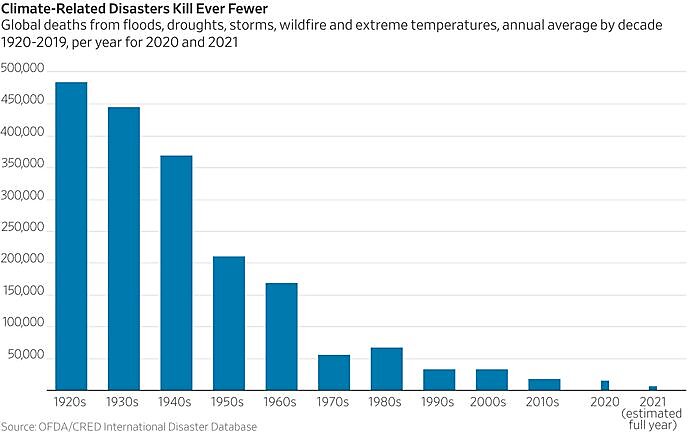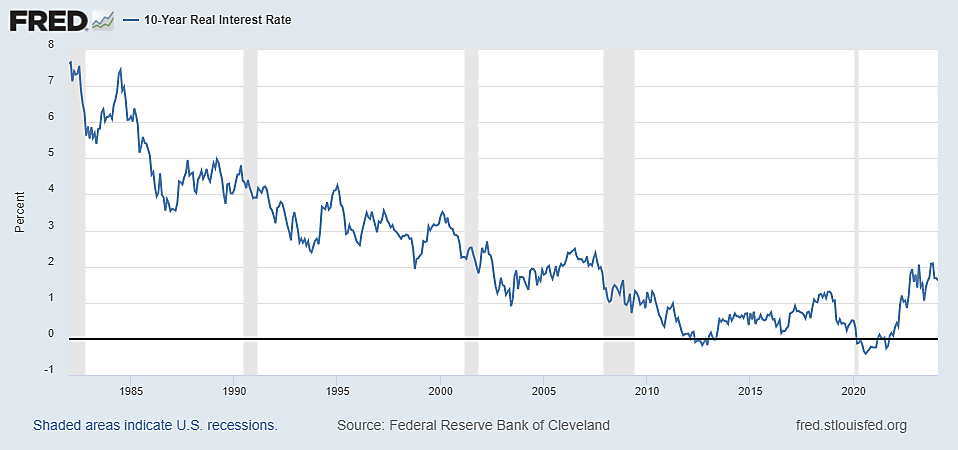
The social cost of carbon dioxide (SCC): Who needs it? As it turns out, anyone who cares about enacting climate policies that improve the lives of our fellow human beings probably needs it. Conceptually, the SCC is the number that represents the negative (or positive) externality of emitting an additional ton of carbon dioxide into the atmosphere.
The idea of the SCC is to take the cost‐benefit analysis framework and apply it to the economic impacts of greenhouse gas emissions over decades or even centuries (not just CO2 but also CH4, N2O, etc.—I will use SCC as shorthand for the social cost of greenhouse gases [SC-GHG]).
The corollary is that the SCC is the yardstick by which climate policies should be measured—if the CO2 abatement cost of a given policy is higher than the SCC, that policy presents a losing proposition to society, according to the economic theory of externalities. Alternatively, if a policy can reduce CO2 emissions at a cost lower than the SCC, textbook economics would tell us to go for it. If one were to establish a CO2 tax at the economically efficient level (the SCC), one would first need to know what the SCC is.
The trouble with anything so central to energy and climate policy is that advocates from all sides tell us drastically different things: the SCC is either the most useless number you’ve never heard of or the most important; it’s either negligible or sky‐high (four times higher than original estimates!); it’s either part of a radical new push to enact a global carbon tax or simply a science‐based tool for evaluating and enacting economically optimal climate policy.
My concern is that the SCC framework can be manipulated to generate a wide range of outcomes. After reviewing the Environmental Protection Agency’s (EPA’s) most recent update to the SCC (and previous attempts to reduce or raise it), it’s clear the EPA’s process presents a conflict of interest. Let’s sift through the details.
Theoretical Framework for the SCC
Below is a short summary of what the SCC is and how scholars estimate it (experts, please feel free to send me a strongly worded letter for oversimplifying this!). Key ingredients for estimating the SCC include:
- Models of local and global economies, including economic outputs like gross domestic product and environmental outputs like CO2 emissions,
- Models of the global climate, including the equilibrium climate sensitivity (the temperature increase from increases in atmospheric CO2 concentrations),
- Models connecting (1) and (2) to establish a “damage function”—the stream of monetized future costs and benefits from additional CO2 emissions (like higher sea levels and temperatures, etc.), and
- A model to convert future economic impacts into a net present value, typically through the application of a discount rate.
If the above framework sounds like a litigator’s field day, it’s because each of the key ingredients (among others) is subject to strong disagreement. Unfortunately, it’s even more complicated than it looks. Other questions that don’t have crisp answers include the geographic scope of inquiry (subnational, national, or global) and the relevant time period to study (how far to look into the future).
A recent paper by Drs. Michael Greenstone and Tamma Carleton outlines the SCC framework graphically. Note that each stage of developing the SCC features uncertainty.
History of Federal SCC Estimates
Moving from the theoretical to the practical, the paper by Greenstone and Carleton also explains the origin of the SCC in federal policy:
Following the Supreme Court’s decision in U.S. Environmental Protection Agency (EPA) vs. Massachusetts (2007), the US government has been required to issue at least some regulations to reduce greenhouse gas emissions, but at the time of the decision it lacked a consistent SCC with which to inform its judgments. In 2009, the Obama Administration issued a temporary SCC and formed an Inter‐agency Working Group (IWG) tasked with developing a robust SCC, based on the best available science and economics.
And the Brookings Institution offers a concise history of the magnitudes of the SCC as estimated by the US federal government:
The Obama administration initially estimated the social cost of carbon at $43 a ton globally, while the Trump administration only considered the effects of carbon emissions within the United States, estimating the number to be between $3 and $5 per ton. As it stands, the official estimate from the Biden administration is $51, but in November 2022, the EPA proposed a nearly fourfold increase to $190.
The Trump administration established the low water mark for the SCC by changing some of the modeling assumptions, namely restricting its analysis to domestic (vs. global) economic impacts and using higher discount rates (3 percent and 7 percent). Interestingly, the SCC estimates by the Interagency Working Group (IWG) in the Obama era and early Biden era are closer to the Trump‐era SCC than they are to the recent update by the EPA, which again changed inputs and assumptions to re‐estimate the SCC. Over the past decade, the federal government’s estimates of the SCC have ranged from near zero to $190 per ton.
What’s Included in EPA’s Update?
In line with efforts already underway by the National Academies of Science, Engineering and Medicine, Resources for the Future, and academic economists, the EPA recently went through a formal rulemaking process to update the SCC. The EPA is still part of the IWG but is moving forward with a separate (and faster) change to its SCC estimate. Here’s how the EPA characterizes its update in a November 2023 report:
These estimates reflect recent advances in the scientific literature on climate change and its economic impacts, and incorporate recommendations made by the National Academies of Science, Engineering, and Medicine (National Academies 2017). The SC-GHG allows analysts to incorporate the net social benefits of reducing emissions of greenhouse gases (GHG), or the net social costs of increasing GHG emissions, in benefit‐cost analysis and, when appropriate, in decision‐making and other contexts.
In its new estimate of the SCC, the EPA adjusted several model parameters. The most impactful changes include the use of a different set of damage functions—particularly ones that feature increased human mortality from climate change—and the application of a lower discount rate (using 2 percent rather than 3 percent, which accounts for the majority of the difference between the previous SCC estimates of approximately $50 per ton and the $190 update).
Regarding changes to mortality estimates, the EPA report states on page 48: “The building block of the global mortality damage function is the estimation of temperature’s impact on mortality rates using historical data.” The report reiterates the large impact of modeled mortality rates on page 80 by stating “net mortality risk increases are the largest share of marginal damages across the categories considered in each damage module.” The paper by Drs. Greenstone and Carleton provides a helpful graphical breakdown of the changes in the new damage functions.
However, the long‐term global trend in climate‐related deaths is steeply declining over the past century. Energy researchers like Alex Epstein argue that human beings’ ability to adapt to a changing climate—what he calls “climate mastery”—largely negates any potential harm from changes in the global climate. In the same vein, the chart below is from an article in the Wall Street Journal by Bjorn Lomborg titled We’re Safer From Climate Disasters Than Ever Before. Lomborg is right. The global data tell a different story from the one EPA relied upon to increase the SCC.

Regarding changes to the discount rate, we should first appreciate the significant impact discount rates have on SCC estimates. Below is the SCC schedule from page 4 of the EPA report, showing the updated SCC by emission year and discount rate. Note that reducing the discount rate from 2 percent to 1.5 percent causes the 2020 SCC to rise from $190 per ton to $340 per ton (nearly an 80 percent increase in the SCC from a 0.5 percentage point reduction in the discount rate).
The EPA claims to follow the latest empirical trends by lowering the discount rate to match the risk‐free real interest rate. The EPA’s new estimate tracks recent guidance by the White House Office of Management and Budget (OMB), which made similar revisions in its guidance document regarding cost‐benefit analyses performed by all federal agencies (called OMB Circular A‑4). An accessible discussion of the broader regulatory implications of a lower discount rate can be found here.
The EPA is correct that the long‐term trend in the risk‐free interest rate in the United States is downward, as shown below. However, it will be instructive to see whether the OMB and the EPA will acknowledge the recent uptick in the 10‐year real interest rate (and update the SCC again if this rate continues to rise). And it’s interesting—arguably inconsistent—that an estimate of the global SCC would rely exclusively on US interest rates.

Source: https://fred.stlouisfed.org/series/REAINTRATREARAT10Y#
There is ample room for debate about whether this is the correct discount rate to use in inter‐generational cost‐benefit analyses. For example, a philosophical reason to apply a higher discount rate to future costs and benefits: high uncertainty about what the world will look like decades or centuries from now. Estimating the future costs and benefits of climate change requires understanding the future itself. Given the pace of technological advancement since the industrial revolution, the task of accurately modeling the distant future may be impossible.
Consider that many climate models offer estimates of the costs and benefits of GHGs out to the year 2300. The year 2024 is as far from 2300 as it is from the year 1748. Imagine colonists in 1748 fretting over the correct level of a greenhouse gas tax to implement for the benefit of the people of the year 2024. At a long enough time horizon, the SCC modeling exercise becomes absurd because the future scenario fades from fuzzy to unknowable. No one living in the year 1748 had an accurate picture of the year 2024, so how much weight should we give our predictions of the costs and benefits impacting people in the year 2300?
EPA’s Conflict of Interest
The choice of model parameters is inherently political because it requires value judgments, such as deciding how heavily to weigh the economic impacts on future generations. Because small tweaks in these value judgments (like the discount rate) can significantly skew SCC estimates, the entity responsible for estimating the SCC should not have a vested interest in the outcome of the analysis.
Unfortunately, the EPA is simultaneously advancing the federal government’s estimate of the SCC and finalizing GHG regulations emissions from power plants and vehicle tailpipes. The EPA should not be allowed to give itself carte blanche to establish the magnitude of the benefits of its own regulations. If the EPA remains involved in establishing the SCC, it should work with the IWG and a wide range of stakeholders. The EPA’s conflict of interest is obvious—it could use updated SCC estimates in cost‐benefit analyses to justify whatever level of GHG regulation it wants. In essence, it gets to pick the benefits in the cost‐benefit analysis.
Industry observers have highlighted the usefulness to the EPA and the Biden administration of establishing a high SCC estimate. New York Times reporter Coral Davenport stated (around the 17‐minute mark at this Brookings Institution forum in April 2023):
The Biden administration is preparing, in the next couple of weeks, to propose what I think will be the most aggressive standard the US has ever seen on US auto emissions. It will be designed to essentially end sales of the internal combustion engine in our lifetime. …[T]hat is a transformation of a cornerstone of the US economy as we have known it for the last century. How do you economically justify that? One way you do that is you come in with the social cost of carbon at $192 per ton. If you can justify, if you can say this rulemaking that will phase out the internal combustion engine and force automakers to change everything they’ve done, force all of us to buy EVs—almost whether or not we want to—if you say the cost of every ton of carbon dioxide that comes out of that tailpipe is $192—hurts us all $192—boom, you basically have your economic justification for this powerful rulemaking.
Even some advocates of aggressive climate policy have rejected the exclusive use of the SCC and said cost‐benefit analyses “as practiced now are little more than a ‘political exercise’ to help agencies sell their policies… not to identify the best policy alternatives.” If the SCC will be used as economic justification for sweeping new rulemaking, then the agency responsible for the rulemaking should not also be responsible for establishing the SCC.
Conclusion
The SCC is indispensable in concept but extremely malleable and borderline unworkable in practice. However, difficulty in estimating an important thing doesn’t make the thing itself any less important. It does make the estimator’s job harder, though, and we should be honest about the potential for abuse (by administrations from both political parties) baked into the SCC framework. At the very least, the EPA should not be allowed to print its own regulatory currency by raising the SCC.





























